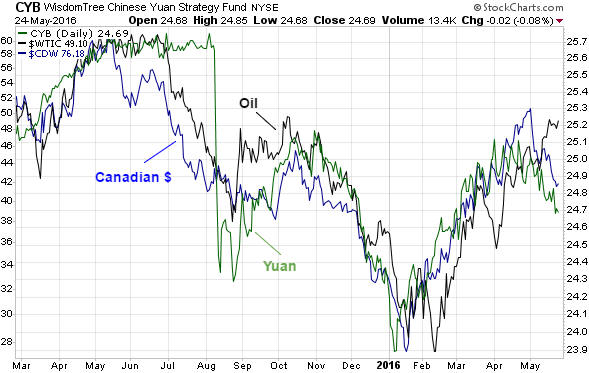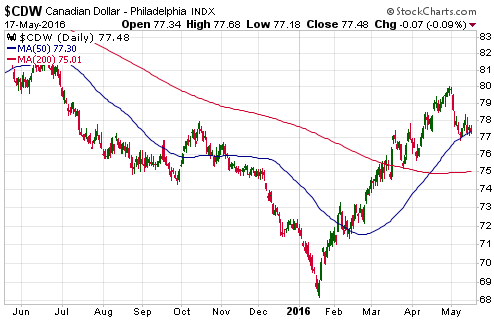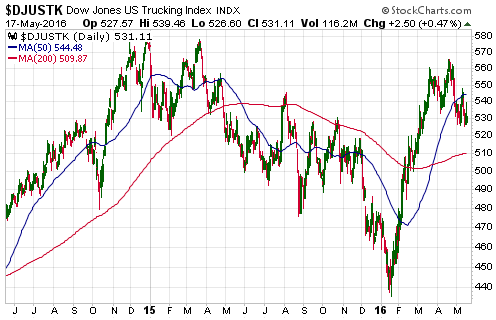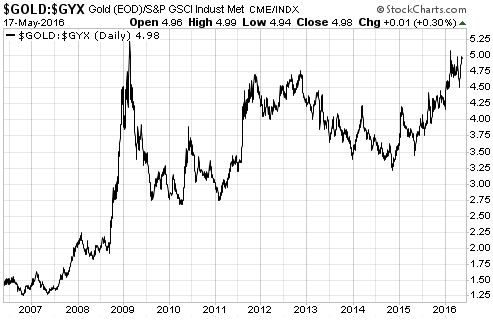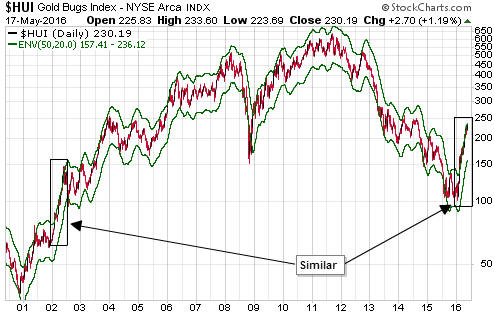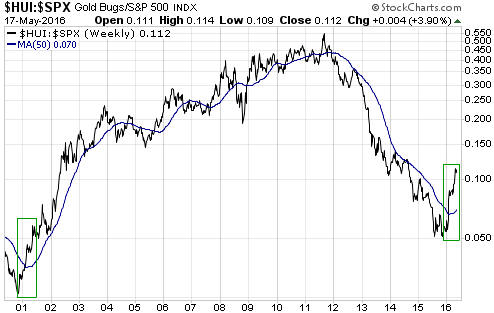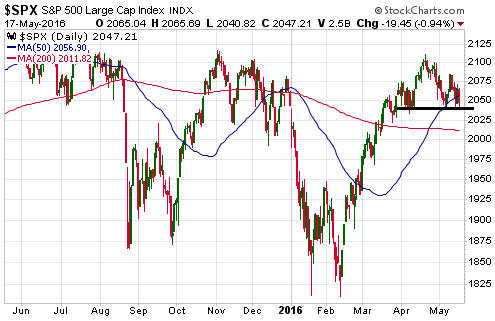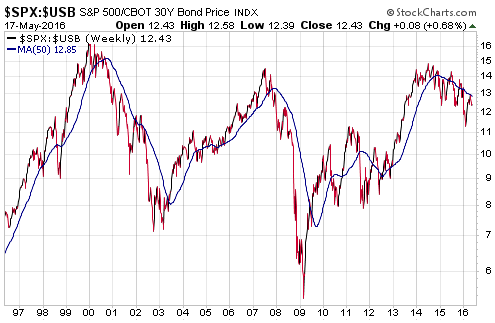The following chart shows that the US$ oil price, the Canadian Dollar and the Yuan (represented on the chart by the WisdomTree Yuan Fund – CYB) have tracked each other closely over the past 15 months. When divergences have happened, they have always been quickly eliminated.
An interesting divergence has been developing over the past few weeks, with the Yuan having turned downward in mid-April, the C$ having turned downward at the beginning of May and the oil price having continued to rise. Either the currency market is wrong or the oil market is wrong. My money is on the oil market being wrong.
One reason to suspect that the oil market is wrong and that the divergence will therefore be eliminated by a decline in the oil price is recent history. In the second quarter of last year the C$ turned downward about 6 weeks ahead of the oil price and in the first quarter of this year there was an upturn in the Yuan followed by an upturn in the C$ and lastly an upturn in the oil price. That is, the currency market has been leading at turning points.
 Print This Post
Print This Post

